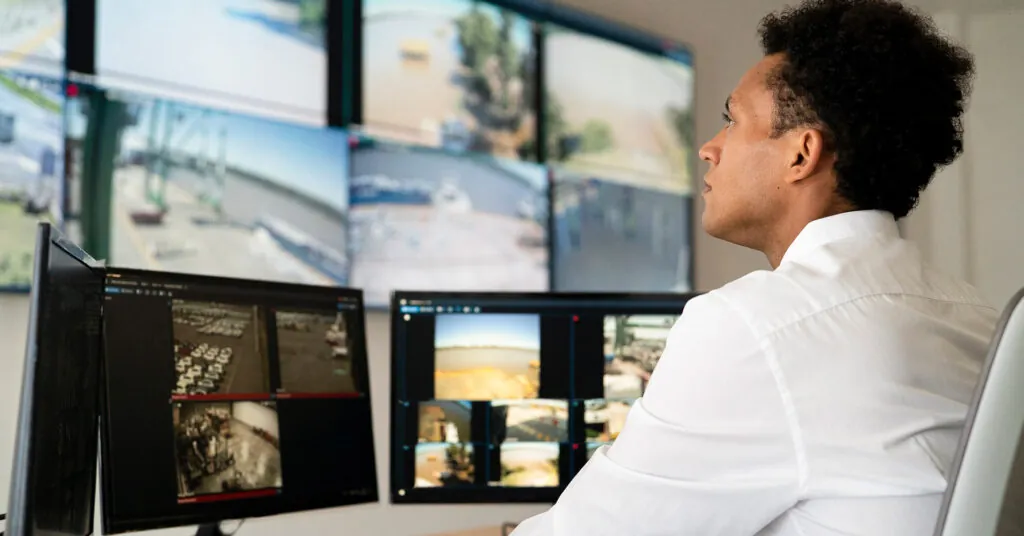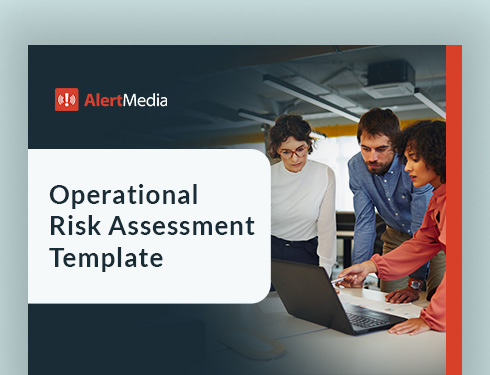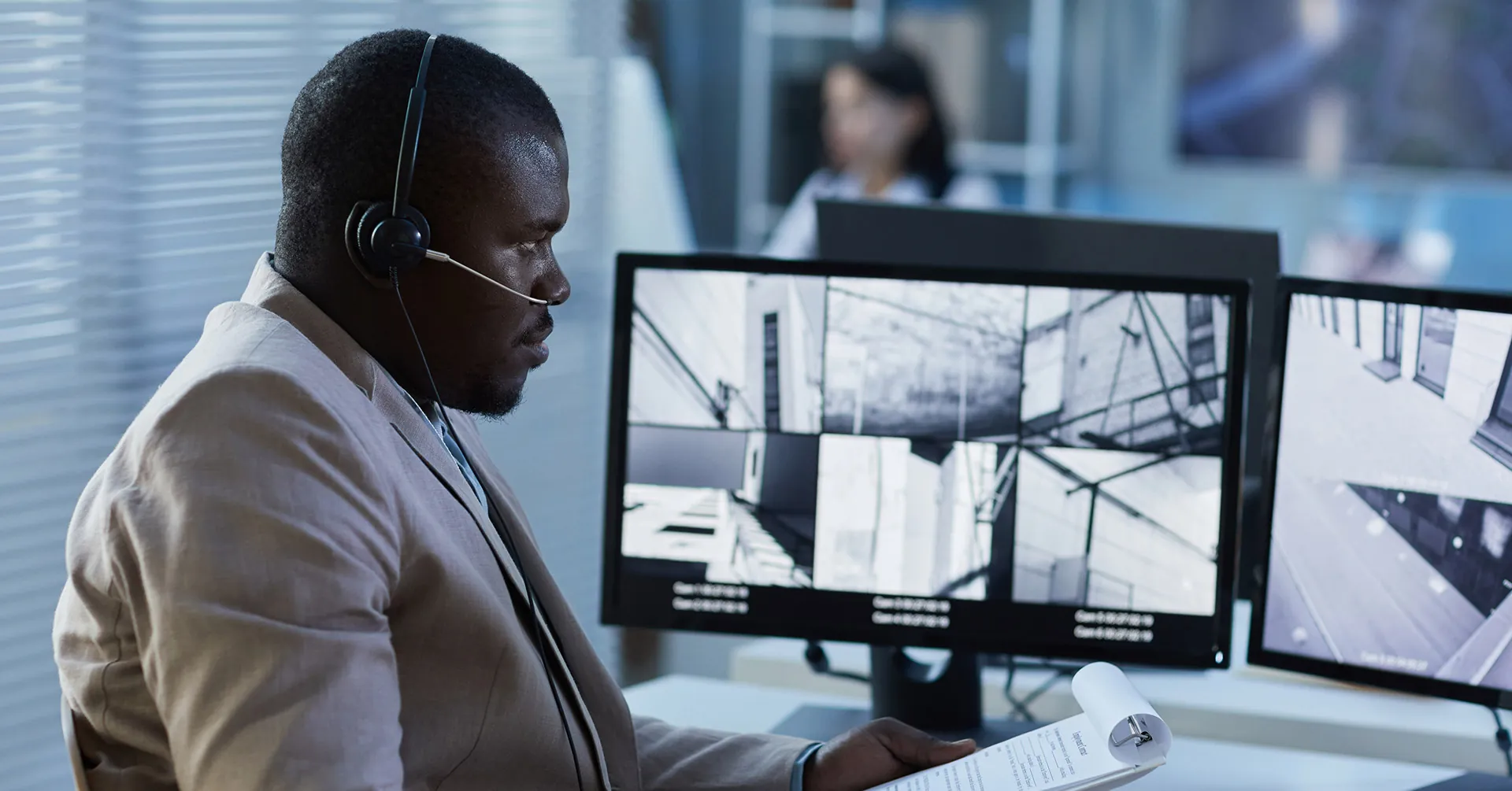
8 Common Physical Security Threats in the Workplace
Organizations face a wide array of physical threats. Learn what to look out for and how you can mitigate the risks they create.

Earthquakes, active shooters, petty theft, and chemical spills might seem unrelated. But they share one critical trait—as a security leader, you’re responsible for protecting your organization from them.
Being prepared is the first step to dealing with physical security threats. As Tony Putzig, Supervisor of East Region Security at Cox Enterprises points out on The Employee Safety Podcast, preparation combines planning and flexibility.
“Having a good, solid plan is crucial to security. Flexibility in the plan and being able to change direction on a dime is important, as security is very reactive given certain situations,” Putzig noted. “Having the right technology and individuals trained to use it to its full potential, and always looking for better tools is very imperative.”
Before building a flexible yet effective physical security plan, you must understand the threats you face. While a physical security assessment reveals many risks, something else always lurks in the shadows.
Read on to learn more about the array of physical security threats companies face and how to protect your company.
Operational Risk Assessment Template
What Does Physical Security Cover?
People often think of vandalism or theft when physical security comes up. But those are just two of the many threats organizations face. Physical security means protecting your company’s people, assets, and locations from physical harm or damage.
Physical security threats take a variety of shapes and sizes. For example, they can be:
- Intentional or accidental
- Manufactured or naturally occurring
- Minor or major
- Internal or external
- Constant, ongoing threats or rare occurrences
- Easily mitigated or unavoidable
The value of human-vetted threat intelligence
In a world of constantly evolving risks, your security team doesn’t have the resources to track every oncoming threat. You need to focus on the hazards most likely to have a major impact on your organization. That’s where threat intelligence can help. Threat intelligence platforms collate and filter massive amounts of public data, then run the results through a human approval process to separate the signal from the noise. You receive only relevant and actionable alerts, so you can confidently mobilize your security team where it matters.
8 Common Physical Security Threats
Many physical security threats are unique to a company’s environment or facilities. But these eight common types of hazards can help you kickstart a threat vulnerability assessment.
1. Employee accidents
Sometimes, mistakes and carelessness can be as damaging as intentional acts. Accidents can have a variety of effects on a company, but there are a few everyday situations that impact physical security:
- Leaving a secure area open or unlocked
- Losing keys, swipe cards, or other means of accessing secure areas
- Mistakes in security implementations, such as improper access controls
- Misusing heavy equipment in a way that damages property or causes injury

2. Internal bad actors
According to research from PwC, 57% of fraud involves company insiders. While many are instances of cybercrime, it underscores how employees can threaten physical security. In some cases, there’s a direct risk. Bad actors can steal assets they can access or intentionally damage company property.
Other times, insiders collaborate with outside actors. For example, employees could feed criminals information on your physical security systems and how to bypass them. Or they could intentionally bypass security measures to allow outsiders to steal company property. An insider threat assessment can assist in determining any risks arising from an internal party’s access to your systems, assets, or data.
3. Equipment failures
Automation is more prevalent than ever and a tremendous asset for security teams. But it also creates the potential for gaps when something breaks. Equipment failures can lead to a variety of physical security threats:
- Power outages can leave physical security systems down, preventing necessary access or allowing unwanted visitors
- Surveillance cameras, floodlights, and other deterrents can break, leaving gaps in coverage
- Predictive security systems may have flaws in their algorithms, which feed your security team bad information
- Poorly maintained smoke detectors, fire extinguishers, or suppressant systems can increase the risk of fires or other emergencies
- Safety systems can fail, leading to security incidents like chemical spills or dangerous usage of heavy equipment
4. Vandalism
At best, a broken window is an annoyance and an unnecessary expense. However, vandalism can also lead to a further breakdown in physical security. For example, say a drunk driver runs into the chain link fence around your facility, damaging it. The act of vandalism is bad enough, but it also creates a weak point a criminal could use to bypass a layer of security. Addressing acts of vandalism quickly and efficiently is critical to maintaining physical security.
5. Theft
Retail theft might be in the headlines, but it’s just one form of stealing that impacts businesses. Thieves also target wholesalers, manufacturers, and any other company with items of value. Keeping your property safe is one of the core challenges of physical security.
Depending on your industry, theft can take many forms:
- Cash on hand or other liquid assets
- Inventory or raw ingredients
- Vehicles or heavy equipment
- Computers, electronics, or other specialized devices
- Confidential documents or sensitive information
In many cases, the damage to your business exceeds the cost of the stolen items. For example, specialized equipment and critical infrastructure can take weeks to replace, costing your company substantial revenue in the interim.
6. Inclement weather
Extreme cold and heat aren’t always out of place. If you live in desert regions, you expect triple-digit temperatures for months. You expect ice and snow in northern climates. But just because these conditions are normal doesn’t mean inclement weather conditions aren’t a threat. Extreme weather creates risks, such as:
- Electronics and heavy equipment failure
- Increased health and injury risks for employees
- Supply-chain disruptions
- Unplanned downtime if employees can’t get to work
Weather incidents can also lead to secondary risks, such as emergency services being unable to provide timely assistance.
While environmental controls will mitigate some of the risks of extreme weather, many workplaces include outdoor components. In those situations, you’ll need to consider how—or if—to keep operations going.
7. Natural disasters
Natural disasters can be devastating. Earthquakes, hurricanes, and wildfires can level entire towns. Floods and ice storms can leave massive destruction in their wake. While some incidents, like earthquakes and tornadoes, are local concerns in certain regions, threats like floods and fires are universal.
Some natural disasters happen regularly enough to be somewhat predictable. For example, hurricane season may be more concentrated in certain months and tends to impact coastal areas most directly. But even these limits are not something to take for granted. Other emergencies, like floods or wildfires, can happen with scant warning.
8. Civil unrest or violence
Most security leaders would consider a physical attack one of the worst scenarios they can imagine. These events put the company’s personnel and property in grave danger, whether it’s a disgruntled ex-employee or random violence.
Sometimes, you’ll have ample warning. For example, a recently fired employee might be a known risk, and security can watch for any sign of them coming near the property. But violence can happen unexpectedly. An incident unrelated to your company could lead to protests or riots where you operate, and it can happen so quickly that you don’t have time to predict it or prepare.
A Layered Approach to Physical Security Risks
There’s no silver bullet when it comes to physical security measures. Even something as simple as preventing a broken window has multiple options, including surveillance equipment, guards, shatterproof glass, and iron bars.
To successfully manage physical security threats, take a layered approach to risk mitigation.
Strong security leadership
Physical security is an organization-wide endeavor, but it starts at the top. Empower your security team with a robust security operations center and give them the tools to protect your company. Integrating physical security into company operations will lead to better outcomes than treating it as an afterthought.
“Being able to change direction on a dime is important, as security is very reactive given certain situations.” —Tony Putzig, Supervisor of East Region Security at Cox Enterprises
Access control systems
Limiting access to sensitive locations and assets is a core tenet of security strategy. Some of the most common access control measures include:
- Automated tools like keyfobs, key cards, or biometric recognition
- Security guards to visually audit people entering restricted areas
- Physical deterrents like barbed wire
- Secure storage for smaller valuables, such as safes or locked cages
In many cases, multi-factor authentication can add an extra layer of security by combining two simpler strategies, such as ID cards with keypads to enter a PIN number. An intruder might be able to steal a badge, but it’s unlikely they’d also know the PIN tied to the ID.
Surveillance systems
Monitoring facilities is a good way to spot nascent threats before they become serious risks. The most common form of surveillance is CCTV systems, but there are several other options:
- Motion sensors on doors, windows, and other places to break in
- Fire alarms, smoke or carbon monoxide detectors, and other specialized chemical detection systems
- Roving guards to look for suspicious activity
- Alarm systems to notify internal teams or law enforcement of physical security breaches
Environmental design
In many cases, facility design and construction choices can improve your target hardening. For example, high walls or hedges can guide foot traffic into more easily controlled pathways. And they can prevent external parties from seeing assets of value or monitoring your internal security practices.
Environmental design is vital in addressing natural threats, too:
- Facilities in areas with frequent snowfall should use slanted roofs to prevent buildup
- In hurricane-prone regions, reinforced buildings can protect your property and assets
- When extreme heat is a factor, light-colored exteriors and careful window design prevent high temperatures from causing damage or injuries
Harmonized physical and cybersecurity
There are never crystal clear lines between physical security and cybersecurity. Converged security pulls the two worlds together and addresses the crossover between them. By working to address both areas simultaneously, you can prevent vulnerabilities from slipping through the cracks.
For example, say your company stores health records protected by HIPAA. Your cybersecurity team has strong firewalls in place and robust network security. But at some point, the keypad lock on your server room reset to 1234, and no one has bothered to reset it. That gap in security could be all a bad actor needs to access your company’s sensitive data.
Security system testing
Uncovering flaws before they become a problem requires regular auditing of security policies and systems. Include stakeholders from across the organization in testing and use the process as an opportunity for learning and development. Employees will be more engaged when they’re learning from mistakes rather than reprimanded for them.
Additionally, test your employee monitoring and mass notification systems periodically. Security isn’t just about prevention—it’s also about response. Knowing you can reach your employees during an emergency is critical.
Continuously Improving Your Organization’s Physical Security
For security leaders, physical security isn’t an endpoint—it’s a process. You’re constantly performing risk assessments and finding better ways to protect your organization’s people and property. Discovering and understanding threats is the first—and possibly most important—step.




